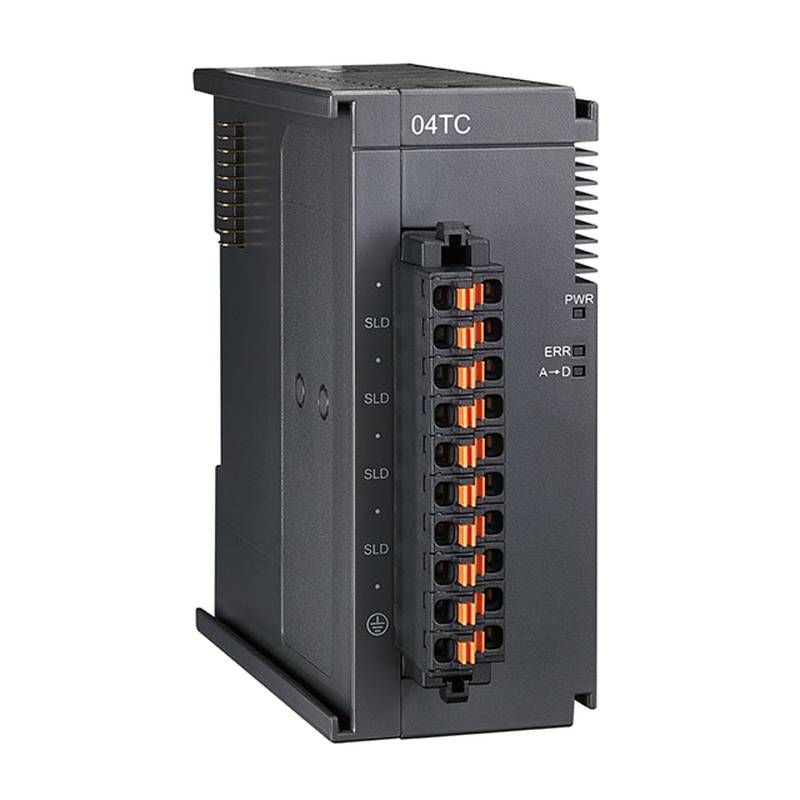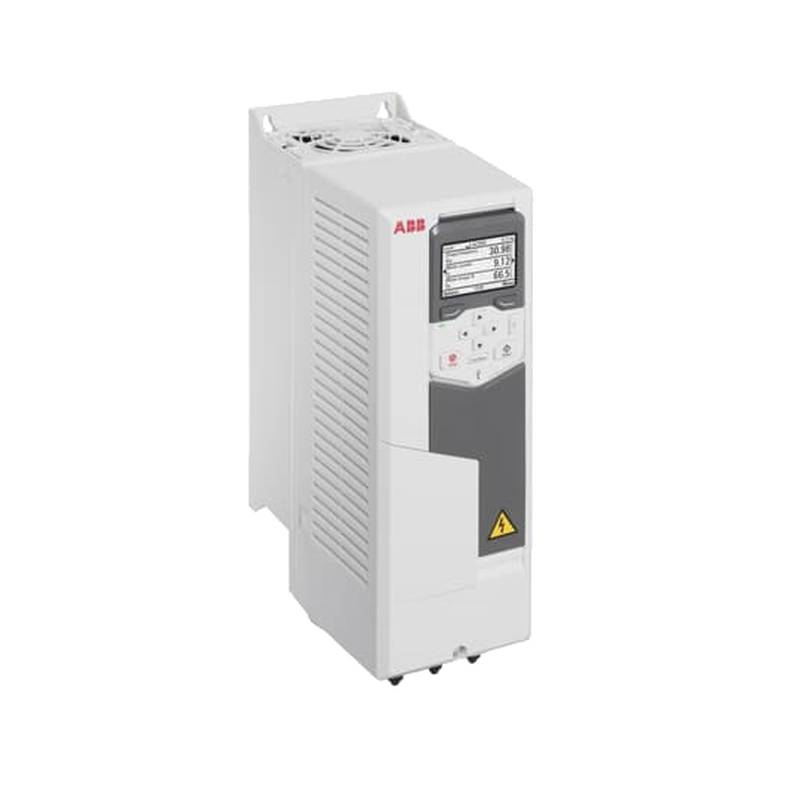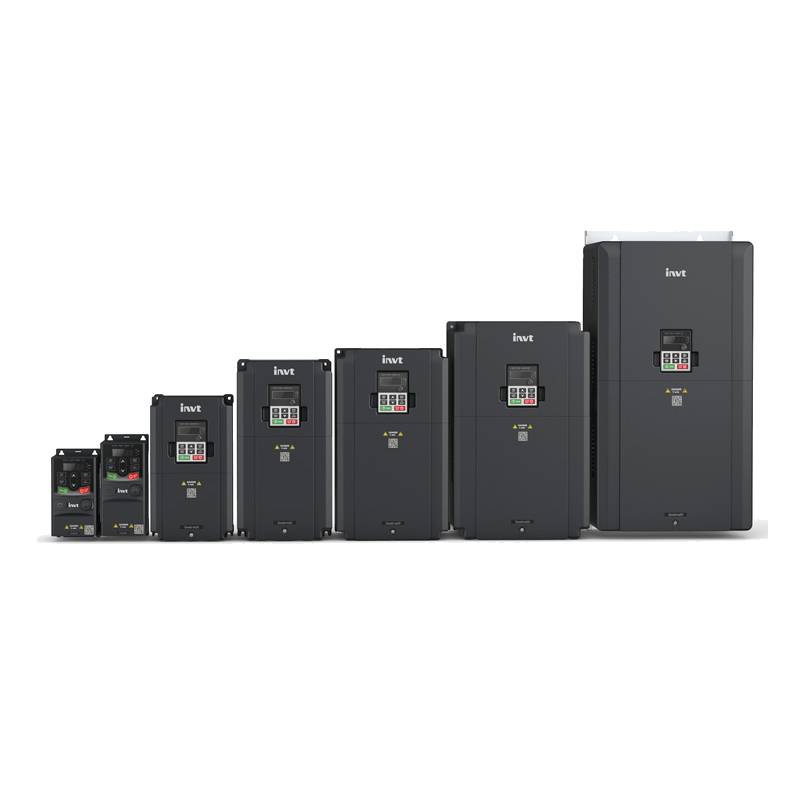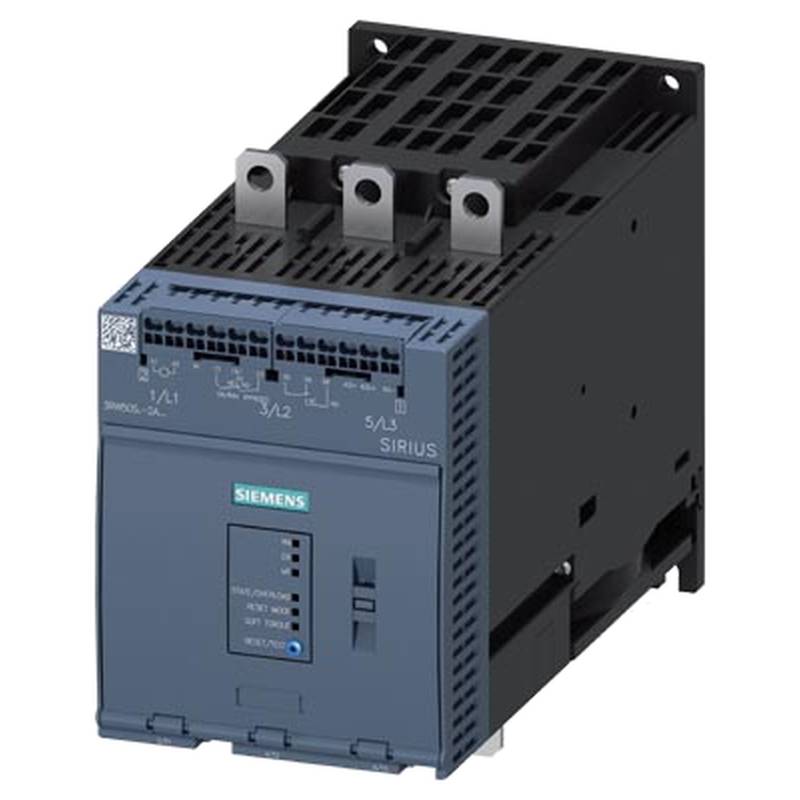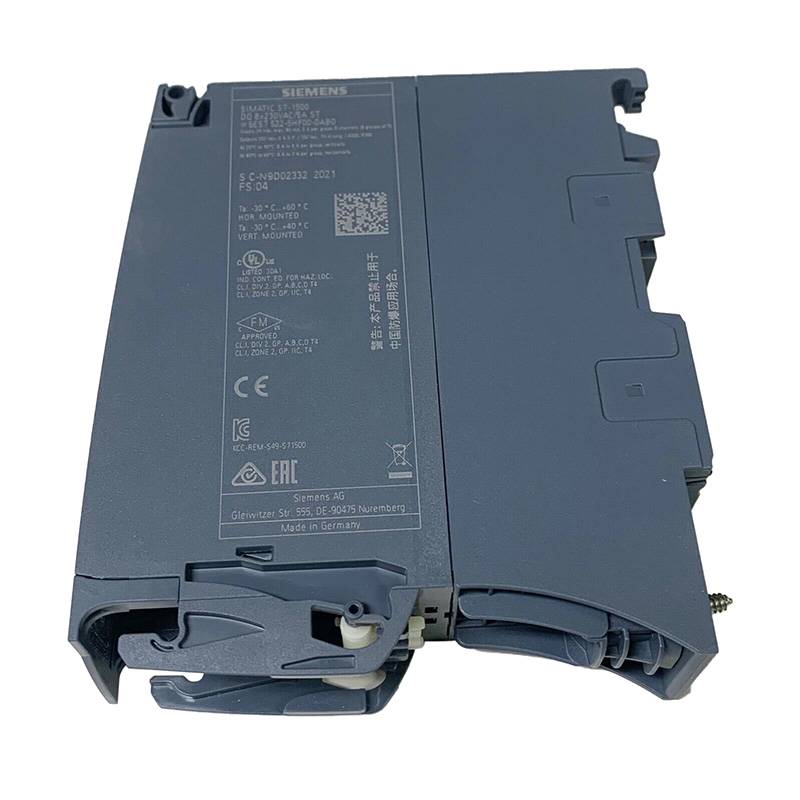
The Delta VFD5A7MH43ANSAA MS300 Universal Industrial Frequency Inverter is engineered for demanding industrial applications, offering robust performance and advanced control capabilities. This 2.2kW, 5.7A inverter boasts a compact design, high efficiency, and versatile functionality, making it a premier choice for variable speed drive solutions. Key advantages include its precise motor control, enhanced system reliability, and simplified integration into diverse automation architectures. Critical technical parameters include an input voltage range of 380-480V AC, a rated output current of 5.7A, and a maximum output power of 2.2kW (3HP). The VFD5A7MH43ANSAA also features a built-in braking unit and supports multiple communication protocols for seamless networking.
Delta VFD5A7MH43ANSAA MS300: Core Features & Market Positioning
The Delta MS300 series, exemplified by the VFD5A7MH43ANSAA, distinguishes itself through its advanced control algorithms, including V/f, Sensorless Vector Control, and an advanced dual-CPU architecture that ensures superior performance and responsiveness. Its market positioning is firmly established as a cost-effective yet high-performance solution for a wide array of industrial automation tasks. The inverter's robust protection features, such as overload, overvoltage, and short-circuit protection, contribute to its reputation for reliability. Furthermore, its energy-saving capabilities and adherence to international safety standards underscore its appeal to industries focused on operational efficiency and compliance.
Key Application Scenarios for the VFD5A7MH43ANSAA
The universal nature of the Delta VFD5A7MH43ANSAA MS300 makes it exceptionally suitable for a broad spectrum of industrial applications. It excels in driving centrifugal pumps and fans, where precise flow and pressure control are paramount, leading to significant energy savings. Its robust performance also finds utility in conveyor systems, packaging machinery, and material handling equipment, ensuring smooth and efficient operation. Furthermore, it is an ideal solution for machine tools, textile machinery, and HVAC systems, where accurate speed regulation and torque control are critical for product quality and process optimization.
Practical System Integration Guidance
Integrating the Delta VFD5A7MH43ANSAA into existing systems is facilitated by its user-friendly design and comprehensive documentation. The unit requires a 380-480V AC three-phase power supply, and proper grounding is essential for safety and optimal performance. Wiring connections for the power terminals (L1, L2, L3 for input; U, V, W for output) and control circuits should adhere strictly to the provided wiring diagrams. Parameter configuration is accessible via the front panel keypad or through serial communication using protocols like Modbus. Initial setup often involves defining motor parameters, setting acceleration/deceleration times, and configuring protective functions to match the application's demands.
Operation and Risk Mitigation
Safe operation of the Delta VFD5A7MH43ANSAA requires adherence to electrical safety standards and proper commissioning procedures. Users must ensure that the inverter is correctly installed in a well-ventilated environment, away from dust and corrosive substances. Before powering on, verify all wiring connections and ensure the load is disconnected. Critical error codes, such as E.OL (Overload), E.OV (Overvoltage), and E.SC (Short Circuit), indicate specific fault conditions that must be addressed promptly by consulting the user manual for troubleshooting steps. Regular maintenance, including dust removal and connection checks, helps prevent operational issues and extends the product's lifespan.
Scalability & Long-Term Value
The Delta VFD5A7MH43ANSAA MS300 offers significant long-term value through its inherent scalability and compatibility with modern industrial automation trends. Its modular design and support for standard communication protocols, such as Modbus RTU, enable seamless integration into SCADA systems and IIoT platforms for enhanced data acquisition and remote monitoring. This connectivity allows for predictive maintenance and optimized operational strategies. Furthermore, its robust construction and Delta's commitment to product development ensure that the VFD5A7MH43ANSAA remains a relevant and reliable component within evolving industrial control architectures.
Frequently Asked Questions
What are the primary benefits of using the Delta VFD5A7MH43ANSAA?
This inverter offers superior motor control precision through advanced algorithms. It significantly enhances system energy efficiency by optimizing motor speed to match load requirements. Its robust design ensures high operational reliability and a longer service life in industrial settings.
The VFD5A7MH43ANSAA provides flexible speed and torque control for various motor types. It incorporates advanced protection features to safeguard against electrical faults. Its compact form factor simplifies installation in space-constrained environments.
The unit supports multiple communication protocols for easy integration into automation networks. This facilitates remote monitoring, control, and data logging. Its user-friendly interface simplifies parameter setup and troubleshooting.
Can the Delta VFD5A7MH43ANSAA be used with single-phase motors?
No, the Delta VFD5A7MH43ANSAA is a three-phase output inverter designed for three-phase AC motors. It requires a three-phase AC input power supply. Using it with single-phase motors or a single-phase power supply can cause damage and is not supported.
Always ensure your motor is rated for three-phase operation and connected correctly to the inverter's output terminals. Consult the product manual for specific motor compatibility guidelines. For single-phase applications, a different type of drive or a phase converter might be necessary.
Refer to the motor's nameplate for its voltage and phase requirements before connecting to the VFD5A7MH43ANSAA. Incorrect connections can lead to equipment failure. Verify the input power supply is also three-phase and within the inverter's specified voltage range.
What is the typical input voltage range for this inverter?
The Delta VFD5A7MH43ANSAA operates with a nominal input voltage of 380-480V AC. This wide voltage range makes it suitable for various industrial power grids across different regions. It is crucial to ensure the incoming power supply is within this specified range for optimal performance and to prevent damage.
Connecting the inverter to a voltage significantly outside this range can result in operational issues or permanent damage to the drive. Always verify the local power supply specifications before installation. The inverter's internal circuitry is designed to handle fluctuations within this band.
The "43" in the product code VFD5A7MH43ANSAA indicates its suitability for a 380-480V power supply. This designation helps in selecting the correct model for a specific electrical environment. Always double-check the product label and manual for precise voltage ratings.
How do I reset the Delta VFD5A7MH43ANSAA after a fault?
To reset the Delta VFD5A7MH43ANSAA after a fault, typically you need to press the STOP button on the keypad after the fault condition has been cleared. If the fault persists, you may need to cycle the power to the inverter. Always identify and resolve the root cause of the fault before attempting a reset.
Some faults, particularly those related to critical safety or hardware issues, may require a full power cycle. This involves turning off the main power disconnect to the inverter, waiting for a specified period (usually a minute or two), and then reapplying power. Consult the fault code section in the user manual for specific reset procedures.
For persistent or recurring faults, it is recommended to contact Delta technical support or a qualified service technician. Continuous fault indications without a clear resolution may point to a more complex issue requiring expert diagnosis. Do not repeatedly attempt resets without addressing the underlying problem.
What is Sensorless Vector Control, and how does it benefit this inverter?
Sensorless Vector Control allows the VFD5A7MH43ANSAA to accurately control motor speed and torque without requiring a physical speed encoder on the motor shaft. This simplifies installation and reduces system costs by eliminating the need for additional sensors and wiring. It provides precise motor performance even under varying load conditions.
This advanced control method enables quick dynamic response, improved low-speed torque, and better holding torque compared to standard V/f control. It ensures the motor operates efficiently and smoothly, which is crucial for applications like conveyors, elevators, and machine tools that demand high precision and responsiveness.
By implementing Sensorless Vector Control, Delta enhances the VFD5A7MH43ANSAA's versatility, allowing it to perform tasks that previously required more complex and expensive closed-loop systems. This makes it a highly competitive and capable drive for demanding industrial automation.
What are the key protection features of the VFD5A7MH43ANSAA?
The Delta VFD5A7MH43ANSAA is equipped with comprehensive protection features, including overload protection (E.OL) to prevent motor and drive damage from excessive current. It also includes overvoltage (E.OV) and undervoltage (E.UV) protection to safeguard against power supply anomalies. Short-circuit protection (E.SC) is also a standard feature.
Further safety mechanisms include protection against over-temperature (E.OT), ensuring the drive's internal components do not overheat, and ground fault protection. It also offers stall prevention during acceleration and operation, safeguarding the motor from getting stuck. These features collectively enhance the inverter's durability and system safety.
These integrated protections minimize the risk of component failure, reduce downtime, and protect valuable connected equipment. They are essential for reliable operation in harsh industrial environments and contribute to the overall longevity of the drive and the machinery it controls.
Can this inverter be programmed for specific application requirements?
Yes, the Delta VFD5A7MH43ANSAA is highly programmable to meet diverse application needs. Users can adjust numerous parameters for motor control, I/O configuration, communication settings, and protection levels. This flexibility allows for fine-tuning performance to optimize efficiency and achieve desired operational characteristics.
Programming can be accomplished through the integrated keypad and display on the inverter's front panel. For more advanced configuration or batch programming, Delta offers PC-based software tools. These interfaces simplify the process of setting up complex functions and managing multiple drive parameters.
Key parameters to configure include acceleration/deceleration times, speed references, current limits, and specific digital/analog input/output functions. Advanced features like PID control and motion control capabilities can also be set up, making it adaptable for sophisticated automation tasks.
What communication protocols does the VFD5A7MH43ANSAA support?
The Delta VFD5A7MH43ANSAA primarily supports the Modbus RTU communication protocol. This industry-standard serial protocol allows for easy integration into supervisory control and data acquisition (SCADA) systems and programmable logic controllers (PLCs). It facilitates remote monitoring, control, and parameter exchange.
Beyond Modbus RTU, Delta often provides optional communication cards for other network protocols, such as Profibus, DeviceNet, or EtherNet/IP, depending on the specific sub-model or configuration. This enhances its compatibility with a wider range of industrial automation networks and control architectures.
The support for standard communication protocols makes the VFD5A7MH43ANSAA a flexible component in networked industrial environments. It enables seamless data flow, remote diagnostics, and centralized control, crucial for modern smart manufacturing and IIoT applications.
What are the power and current ratings of the VFD5A7MH43ANSAA?
The Delta VFD5A7MH43ANSAA has a rated output power of 2.2kW (kilowatts), which is equivalent to approximately 3 horsepower (HP). Its maximum rated output current is 5.7 Amperes (A). These specifications determine the size and type of motor it can effectively drive.
It is designed to operate with an input voltage range of 380-480V AC, three-phase. The inverter's capacity ensures it can handle the continuous and peak demands of motors within its power class. Adhering to these ratings is critical for preventing overload and ensuring reliable operation.
When selecting a motor for this drive, ensure its power and current requirements fall within or below the inverter's specified ratings. Overloading the inverter can lead to faults and potential damage, while significantly underutilizing it might indicate an inefficient system design.
How is the VFD5A7MH43ANSAA installed physically and electrically?
Physical installation involves mounting the inverter vertically in a clean, well-ventilated area, ensuring sufficient clearance for heat dissipation. It should be mounted on a stable surface away from direct sunlight, excessive dust, or corrosive environments. Proper grounding of the unit is mandatory for safety and performance.
Electrically, connect the three-phase input power (L1, L2, L3) to the designated terminals. The motor is connected to the output terminals (U, V, W). Control wiring for digital inputs, analog inputs, relay outputs, and communication ports should be connected according to the detailed diagrams in the user manual.
Ensure all power is off before making any connections. Use appropriate cable types and sizes as specified in the manual. Following the correct installation procedure is crucial to prevent electrical hazards and ensure the drive operates reliably and safely according to its design specifications.


















